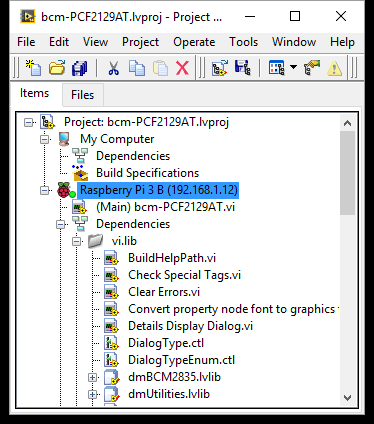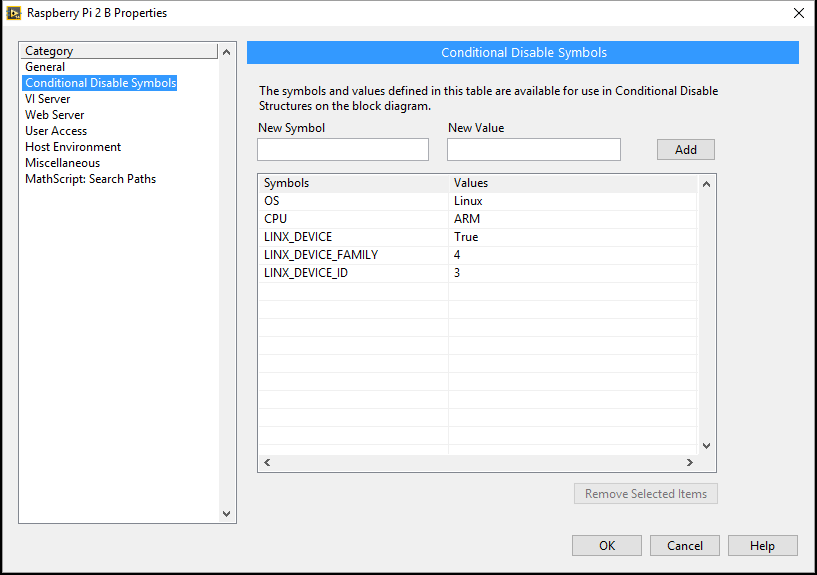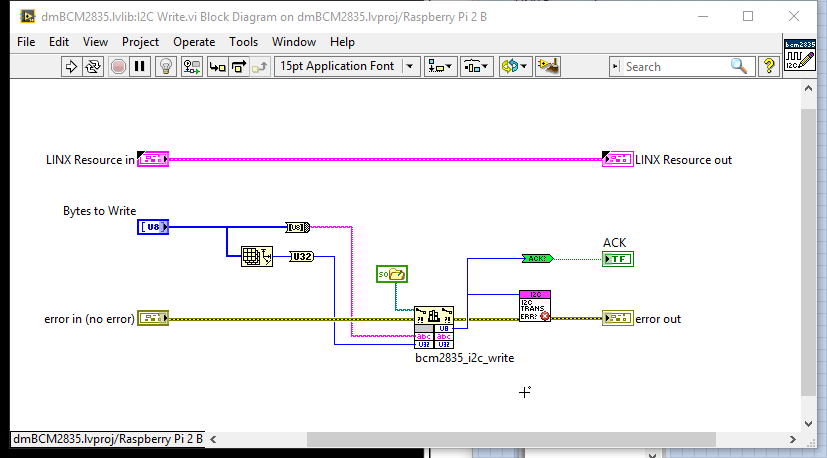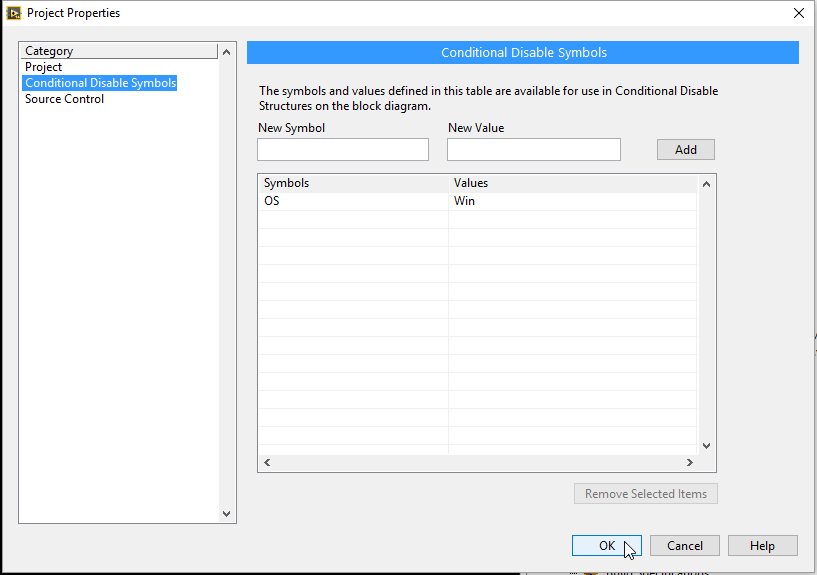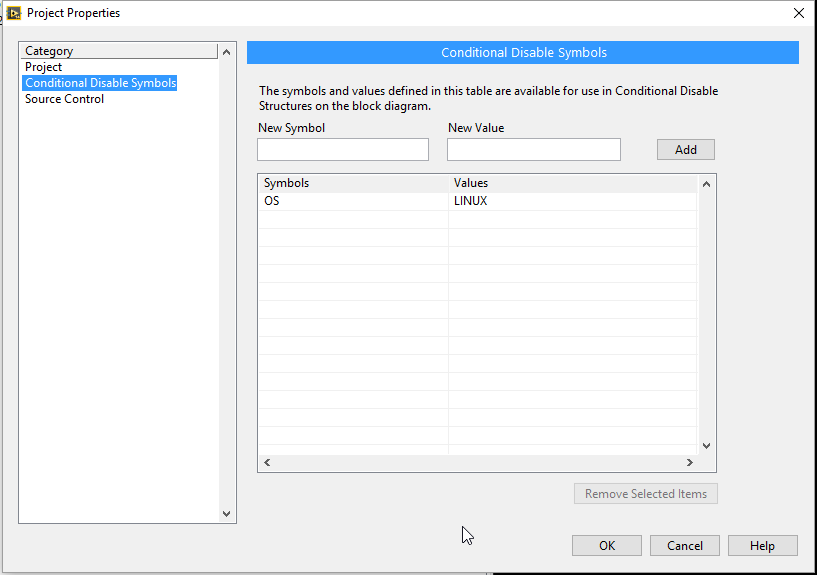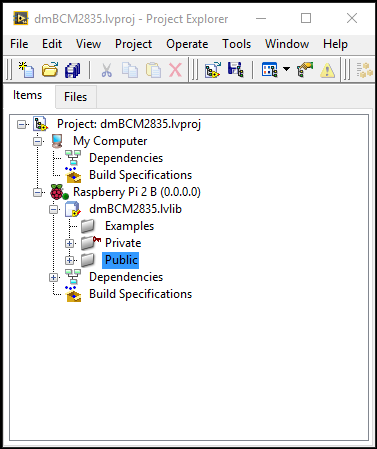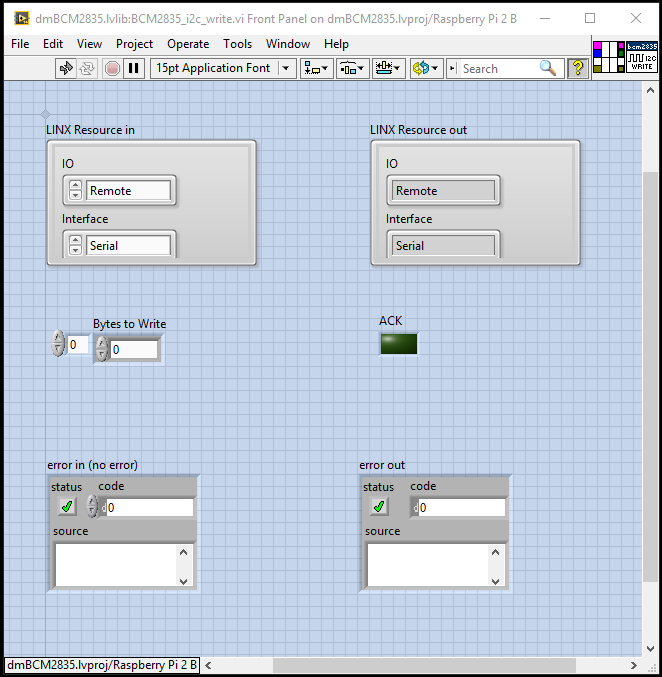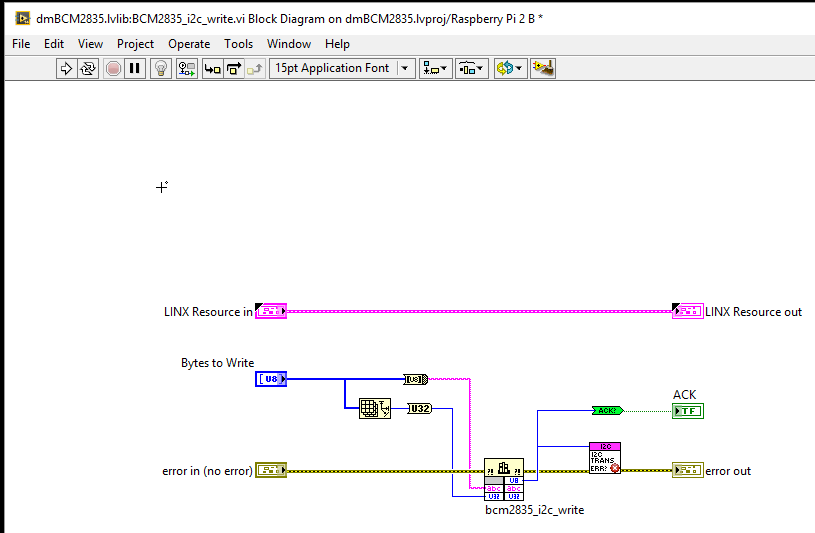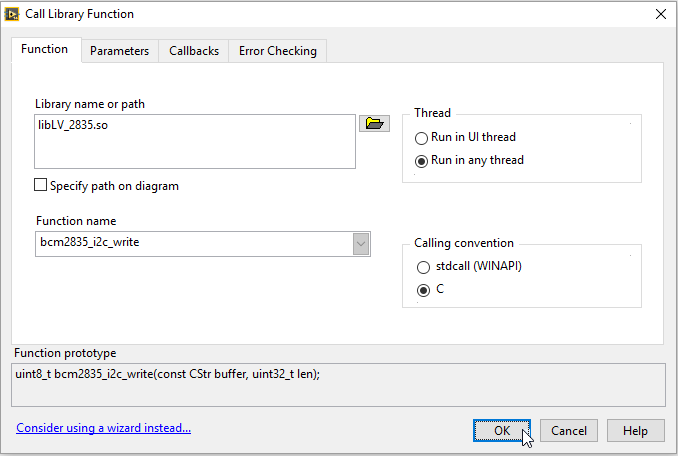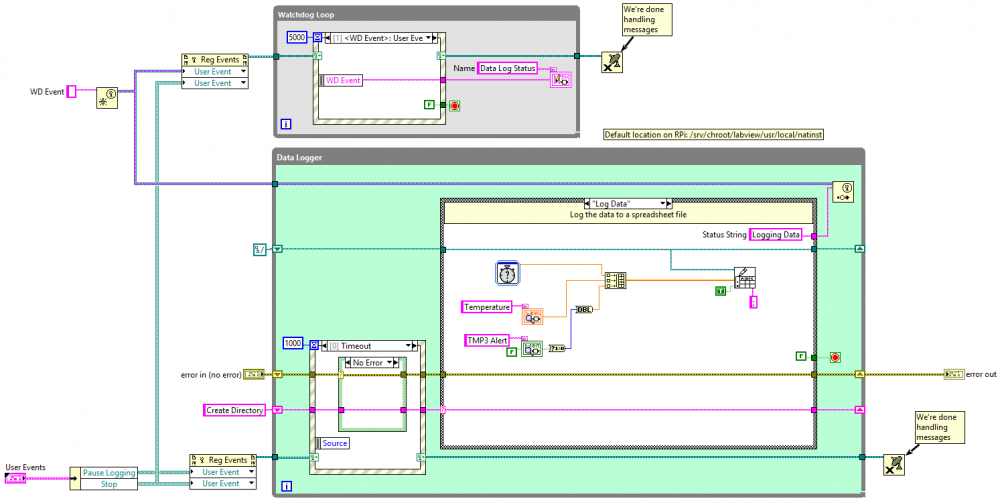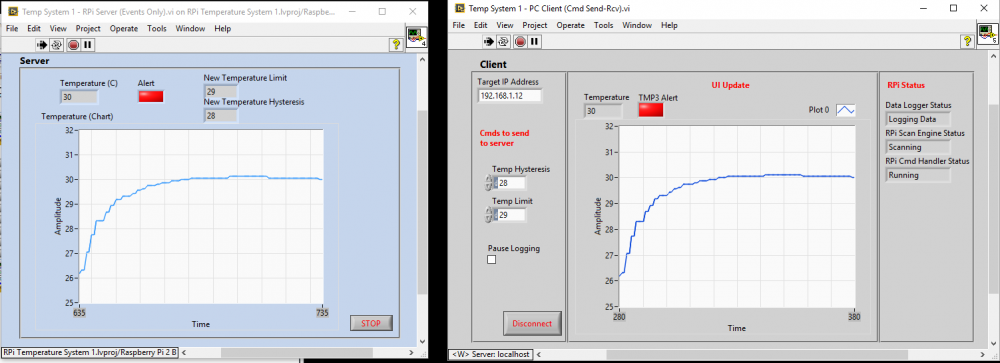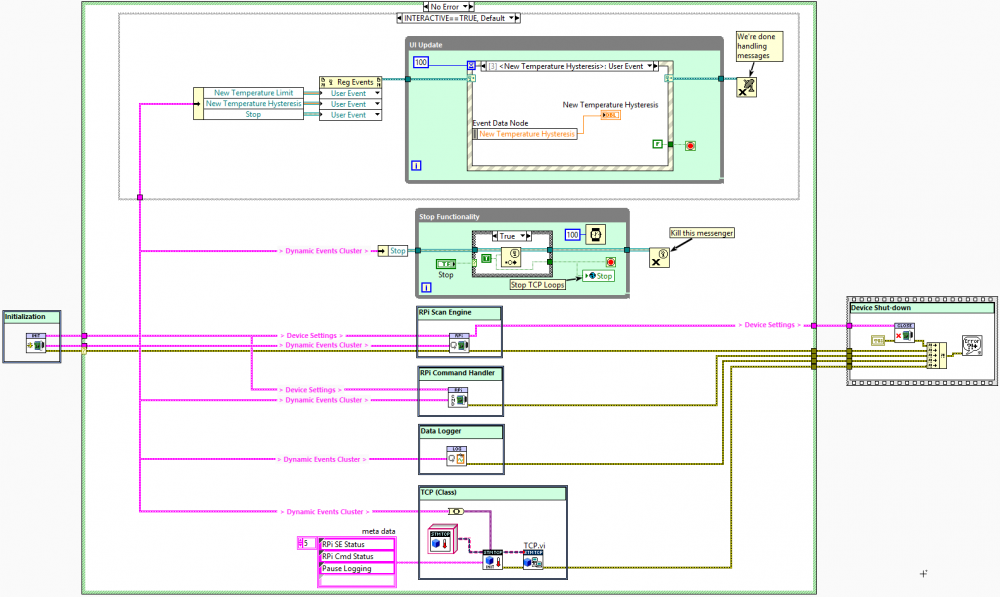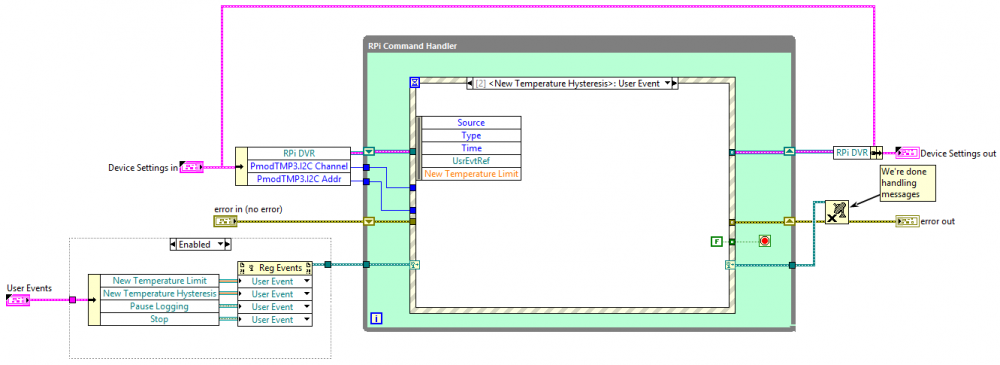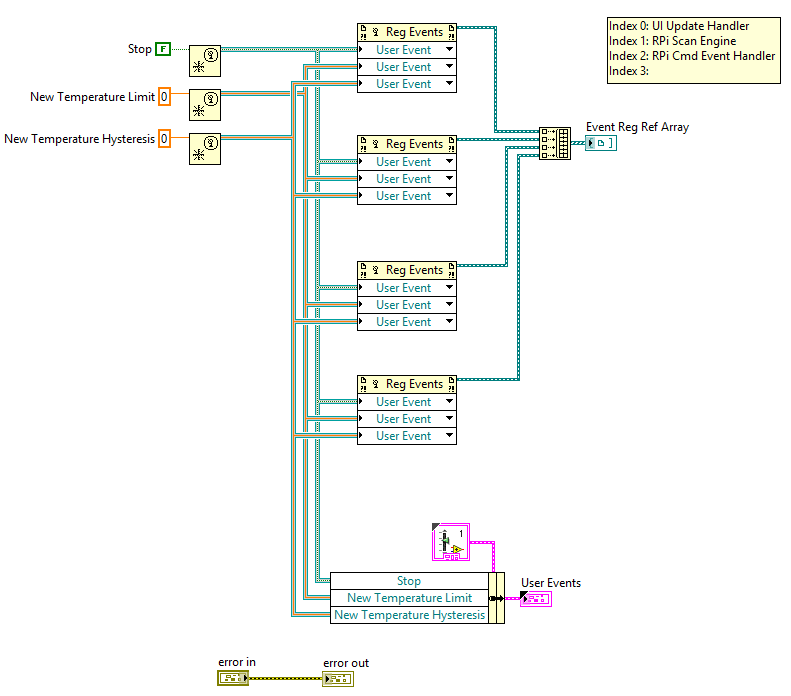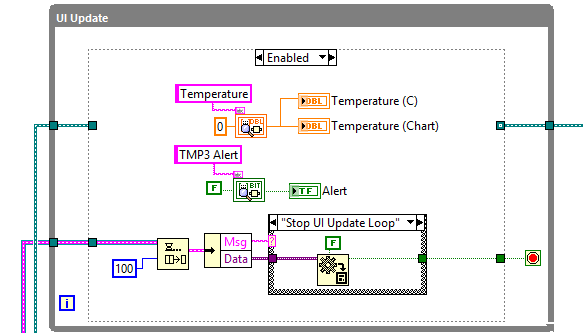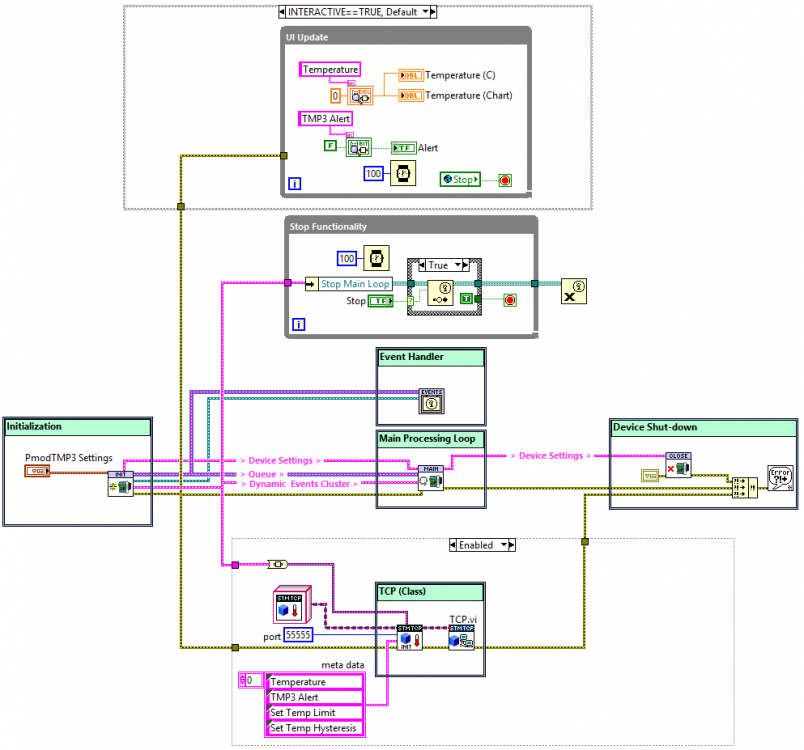
dmurray
Members-
Posts
36 -
Joined
-
Last visited
Content Type
Profiles
Forums
Downloads
Gallery
Everything posted by dmurray
-
I don't think so, the build process doesn't seem to care too much about the file once it can 'see' it in the Shared Object folder I created in vi.lib. However, users will still have to copy the shared object file into the correct location on the RPi, using Filezilla or some other means. And it needs to go into the user space that the MakerHub LINX tool creates. See Local IO description here for more details on the architecture if you're interested. So a user still has some work to do, which isn't ideal. I'm sure the process could be automated, but that's lower priority at the moment. Another point is that the .so file in this case would not be compatible with the TSXperts compiler for RPi, which I believe is imminent. Edit to add: Just realized you mean will there be a dependency problem for users when they install the package. That's something I need to check on a second machine.
-
TARGET_TYPE doesn't seem too work in this case. Or, to elaborate, it works fine when building the package, but not when I deploy a project to the RPi (I get an error that the .so library cannot be opened). Also, on the project that I'm deploying to the RPi, I can't now set the TARGET_TYPE parameter to Unix try to get around the error. It says something about the symbol being reserved by LabVIEW. Possibly I'm doing something wrong. I don't think it matters that the user can only work in a project. I think they actually have to, as they need to set the target to Raspberry Pi (see below). Another possibly important detail about the shared object file in this case is that it will only be compatible with the LabVIEW LINX tools. There are already some conditional disable options set up for the RPi in that case:
-
Works perfect, thanks for the suggestion! Here's the steps I used, for anyone else who has this issue: 1. Created a directory in vi.lib for this shared object and future shared objects. 2. Used the 'Specifiy path...' option for the CLFN, and created the sub-vi for the path. 3. Created two options for the path; one for OS == Win and the other for OS == Linux. 3. When I build the VIPM package, I use the OS == Win symbol. 4. Then, in projects that I will deploy to the RPi, I use the OS == Linux option. Thanks again, much appreciated.
-
I've built a VIPM package of re-usable code which I want to use with the Raspberry Pi, the RPi effectively being an embedded linux platform. For the code I first built a shared object file (.so extension, basically a linux DLL) for this GPIO library. I then wrap the functions I need using LabVIEW CLFN's. Of course Windows hates this file and LabVIEW will complain if it tries to access it, but I can solve that by building my library inside a project with RPi as the target. When I build my VIPM package, a search takes place for the .so file, but it gets ignored and the package builds without errors. So everything is fine up to this point. The problem occurs though when I install the VIPM package (to vi.lib, although it doesn't matter where). All the VI's in the package are broken (see pics below). I can solve this by simply opening up each CLFN on the block diagrams and then closing them- the VI is fixed and the Run arrow becomes unbroken. So this will solve the problem. But I need to do this for all the VIs in the package which is tedious. Does anyone have any recommendations on how to solve the broken VI problem? To be honest I don't mind the fix I have (opening and closing the CLFN for all VIs) but other users might not like this idea, and sharing decent code is one of my aims in using the RPi (in the Maker tradition). Open and close CLFN to fix broken VI: Fixed VI:
-
CRIO-style architecture for Raspberry Pi
dmurray replied to dmurray's topic in LabVIEW Community Edition
Don't change on my account, the discussion is relevant and interesting to me. Any more questions from me will probably be distinct enough that I will start a new thread anyway, -
Approach for watchdog timers?
dmurray replied to dmurray's topic in Application Design & Architecture
It turns out the RPi does have an internal watchdog feature, as you suggested, although apparently it has some issues. But I also found this, which will serve as an external watchdog if I need it. As well as the watchdog functionality, the real time clock itself will also be useful, as the RPi needs to be connected to the internet to keep accurate time (i.e. it doesn't have native or on-board real time clock functionality). So this is perfect for what I want. Anyway, I'm probably overthinking this, because on reflection the concepts are really simple. But thanks for your help! -
Approach for watchdog timers?
dmurray replied to dmurray's topic in Application Design & Architecture
Okay. So is my thinking correct here?... I could use a HW Real-time clock module and configure it with a timeout. When my SW is running on the RPi, I just 'kick' the module timer periodically to reset the timer. And if the module does time out (because my SW has presumably hung), the module sends a signal back to the RPi which will reboot it. -
Approach for watchdog timers?
dmurray replied to dmurray's topic in Application Design & Architecture
Not sure why I thought this was difficult. I just added a Watchdog Event Loop to any sub-VI I want to monitor, and send the status to the client. So it's more of a status monitor than a watchdog timer, although it does flag timeouts to the client as well. -
Related to my post here regarding designing a decent architecture for Raspberry Pi, I want to implement a watchdog timer, or timers. My current architecture is shown below. The three main loops that I think I need to monitor are the RPi Scan Engine, RPi Command Handler, and the Data Logger, The Scan Engine reads the system temperature and high-temp alert.The RPi Command Handler accepts commands from a TCP client and updates system settings. The Data Logger just logs the temperature and alert status at 1 second intervals. Regarding watchdog timers, the problem is I've never had a need for one in my usual LV programming, so I'm not quite sure what I want here. If I was using a CRio I could use the built in HW watchdog timers, but that doesn't apply here. So I guess I need some sort of SW timer. What's the general advice here regarding custom-built watchdog SW timers?
-
CRIO-style architecture for Raspberry Pi
dmurray replied to dmurray's topic in LabVIEW Community Edition
There's quite a bit going on in the demo code, more than I can take in quickly. It appeals to me more as something I would use in my every-day LabVIEW coding in work, rather than what I'm trying to do with RPi, which is to build a system that intermediate programmers can easily understand.But again, I need to look at the code more closely to try and grasp the basic concepts in it, and see what I can use. For RPi, I can see useful services being a re-usable data logger, or TCP server, or maybe even reusable sensor modules. As I type this, I'm warming to the idea. And, another plus, I now know that VI macros exist. -
CRIO-style architecture for Raspberry Pi
dmurray replied to dmurray's topic in LabVIEW Community Edition
Okay, so the reason I messed up the events was that I rearranged and renamed some of the events in the events cluster. Using method 2 (smithd) I fixed the issue, thanks for the info. Also smithd, thanks for the comprehensive post. Pretty much everything in it is useful to me. I'm going to crack on with some more coding... -
CRIO-style architecture for Raspberry Pi
dmurray replied to dmurray's topic in LabVIEW Community Edition
An issue I've run into: I've been messing around with the events in this project, and at edit-time I've lost some information about the events. An example is shown below, where the event is <New Temperature Hysteresis>, but in the event I get the data for 'New Temperature Limit'. What have I screwed up, and how do I fix it? -
CRIO-style architecture for Raspberry Pi
dmurray replied to dmurray's topic in LabVIEW Community Edition
Register at destination... of course, seems obvious now that you say it. Your second point, I can't quite visualize. Can you post a simple screen shot? -
CRIO-style architecture for Raspberry Pi
dmurray replied to dmurray's topic in LabVIEW Community Edition
Related to this architecture, I have a question on the best way to pass around Event Refnums and User events to different sub-vi's. Currently what I'm doing is passing the Reg Events around as an array, and the User Events as a cluster (Method 1 below). Is a better solution to make all the events as the same type (variant in a cluster) and pass around an array (Method 2 below)? Or is there something else I need to be doing, or watch out for? I'd like to iron out these basics with this small project before I try to build something substantial and run into unforeseen issues. Method 1: Method 2: -
CRIO-style architecture for Raspberry Pi
dmurray replied to dmurray's topic in LabVIEW Community Edition
Yes, I was getting caught up a bit in stopping the loops cleanly, and wanted to experiment a bit anyway. As an exercise my plan now is to do one version completely using queues and another using events. That will push me along the learning curve. My worry is that things will get too complex though. In the maker tradition, my plan would be to share this code with other users who generally won't have a lot of LabVIEW experience. Even implementing the TCP server as a class like I did here would be too much for most people. But also it's important that I don't do anything really bad in terms of coding. No point in passing bad habits along to others. Thanks for your help, it's much appreciated. I'm sure I'll have more questions as I go along. -
CRIO-style architecture for Raspberry Pi
dmurray replied to dmurray's topic in LabVIEW Community Edition
Okay, had a re-watch of the Jack Dunaway presentation from NI Week a few years back, and realized I was splitting the event reg refnum wire incorrectly i.e. I was just branching it and wiring it to the two event handlers. Having two Reg Events functions solved the problem. The fine details in LabVIEW are always my downfall.... -
CRIO-style architecture for Raspberry Pi
dmurray replied to dmurray's topic in LabVIEW Community Edition
I haven't tried that particular architecture, but I will now that I know about it (thanks!). Web Services support has been added to LINX-RPi; there's a basic example on MakerHub, so I see no reason that the code in your link shouldn't work. The only thing to watch out for is that LINX-RPi doesn't support Shared Variables, in case they (Network Shared Variables) are used in the code you linked to. I need to have a proper look through the code. Regarding RPi and LabVIEW there are two approaches that I know of: MakerHub (LINX) and TSXperts. What I know about MakerHub-Linx: Doesn't support front panels running on a monitor attached to the RPi. You can either run code interactively with the front panel on your development PC, or use a deployed application and use TCP/Web Services/(other??) to interface with the RPi. Shared Variables aren't yet supported as mentioned. Not sure if that's much of an issue. GPIO support is somewhat limited. No PWM, can't use dedicated CS pins for SPI, can't programatically set pull-ups/downs, events, etc. I'm currently wrapping this library to improve the GPIO functionality, although I guess the MakerHub guys will do something similar eventually anyway. As I understand it, LINX is not meant to be used in commercial applications. It's really meant for hobbyists/makers/academia/etc. The RPi won't have the determinism of a RT system, but again for the types of applications it's meant for that probably doesn't matter. RPi currently only runs on LV2014. But you can use the Home version which is very cheap (compared to the standard/pro versions), and you get the Control and Simulation package, and MathScript functionality as well. Regarding the TSXperts version, I don't know much about it. There's a LAVA thread here. Main differences are it allows the front panel to be displayed on a monitor attached to the RPi, and it is a commercial application (both non-free and can be used in commercial apps, if it follows their Arduino model). I think it's almost ready to be released. I'll probably buy the cheaper version to evaluate it. -
CRIO-style architecture for Raspberry Pi
dmurray replied to dmurray's topic in LabVIEW Community Edition
So just to clarify, for a queue I just need to do this: (1) Add another message to the QMH: (2) Handle the message in a loop as follows: Now on to events: I'm having some troubling implementing the event-style stop. I assumed I could use one event trigger ('Stop Main Loop' in my example) and have more than one event structure be registered for that event i.e. a one-to-many relationship. I did that in my code (one generated event, two event structures registered for the event) but sometimes only one event structure fires when the event is generated. Am I right that events are a one-to-many relationship? -
CRIO-style architecture for Raspberry Pi
dmurray replied to dmurray's topic in LabVIEW Community Edition
Okay, so I cleaned things up a bit for RPi side. Basically just put the Stop functionality in its own loop and then was able to have the main loop as a sub-vi. I also wrapped the TCP functionality in a class so that I can re-use it on other projects. The BD is still a bit messy though. A question on using a Global for stopping loops: in this case I assume that because the global is only written in one location (i.e. the event loop when I'm shutting down), and read in several loops, that this is a safe use case for a global? I think my other options are sing a LV2 style global (not much point as it's effectively the same thing?), or using a CVT value seeing as I already have that functionality in the code anyway.

